Group Riding
 Tue, September 7, 2010
Tue, September 7, 2010 
Cycling in a group is one of the wonderful things about our pastime; like minded people socializing while exercising.
There are few sports where you can do this as well.
The picture on the left is a group doing just that; highly visible to other road users and riding two abreast as is legal in most places.
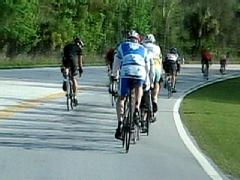 The picture on the right is not a group ride in my opinion; it is a group of cyclists all riding as individuals on the same section of the highway.
The picture on the right is not a group ride in my opinion; it is a group of cyclists all riding as individuals on the same section of the highway.
A few strong riders are going “Balls out” at the front, tearing what could have been a group apart. There is no socializing going on.
If there is one complaint I hear all the time from the non-cycling public, it is that groups of cyclists ride three and four abreast blocking traffic. I am sorry to say this but in many cases it is true, I have witnessed it.
Here is a group of professional cyclists on a training ride. The important thing about this group is that they are taking less than half the lane and a car wishing to pass can easily see around them to determine whether it is safe to do so.
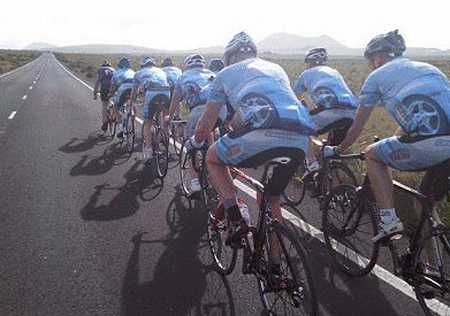
In this next picture, these riders are technically riding two abreast, but why are they taking the whole lane? What is with all that unnecessary wasted space in the middle?
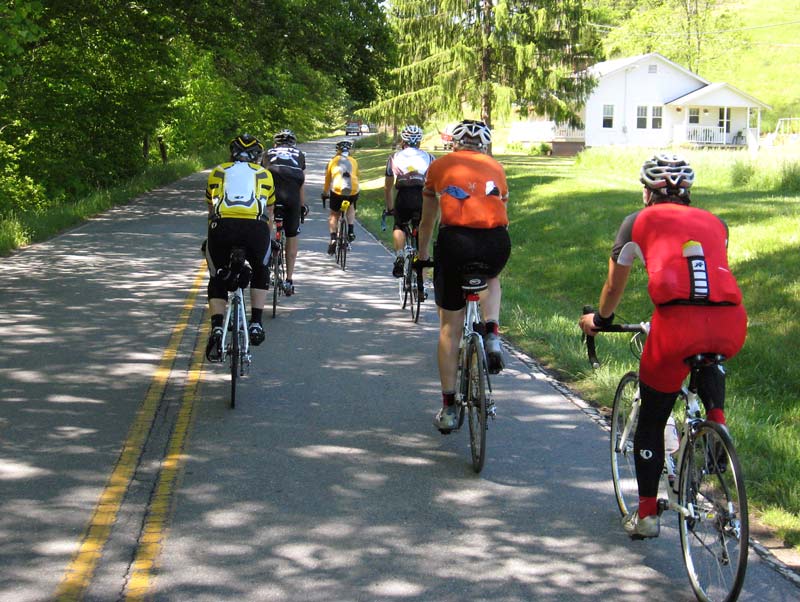
Here is another large group of about twenty experienced riders; these guys have the luxury of a nice wide shoulder on this stretch of road, but even if the shoulder was not there they would only be taking half the lane and it would be easy for a passing driver to see around them.
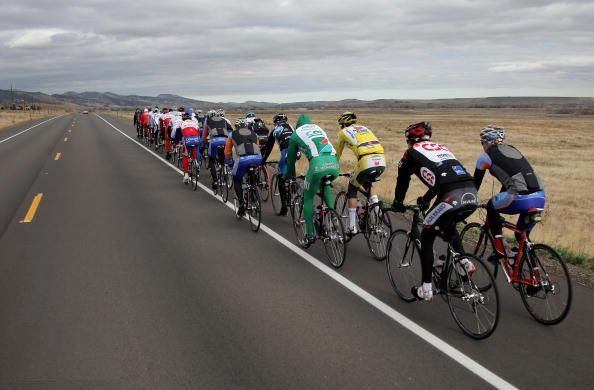
Then there is this group. You could argue that this stretch of highway is three lanes wide on either side, so why shouldn’t a group of cyclists use the whole lane. Just because you can, does that make it right?
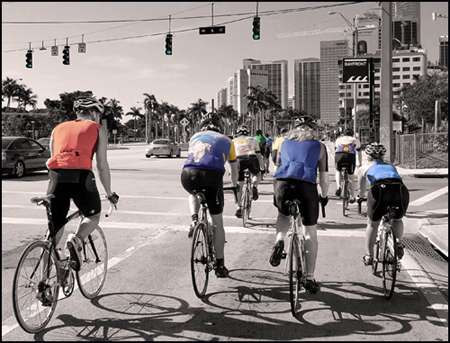
It is not that difficult to ride two by two in a pace line, it just takes a few like minded individuals to democratically decide that is what they want to do.
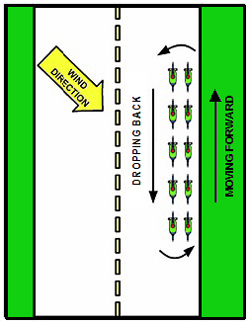 If you ride in a single pace line, the line is twice the length for a car to pass, and there is usually a rider dropping back from the front, so the line is still two abreast at some point.
If you ride in a single pace line, the line is twice the length for a car to pass, and there is usually a rider dropping back from the front, so the line is still two abreast at some point.
A group like the one shown on the left can cover a lot of miles at a fairly good pace, and training wise is more beneficial to everyone.
I may leave myself open to criticism in saying this, but it seems to me that many want to look like professionals with the equipment and clothing but have no interest in trying to ride like a professional.
That is to take the time to learn to follow a wheel, and to ride in close proximity to others.
And socialize, even the pros do it in the middle of the peloton during the Tour de France.
Feel free to weigh in with your views on this subject
























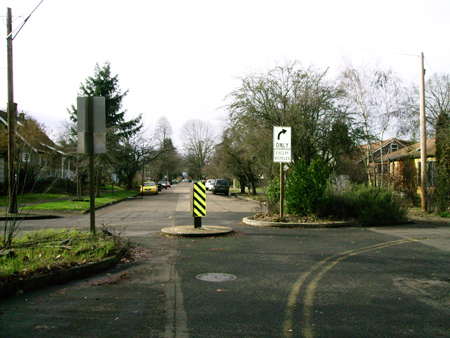
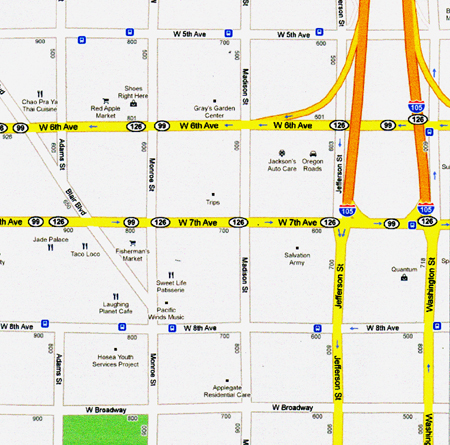
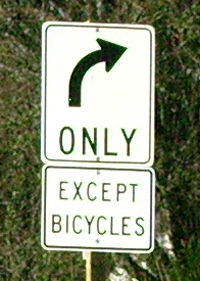
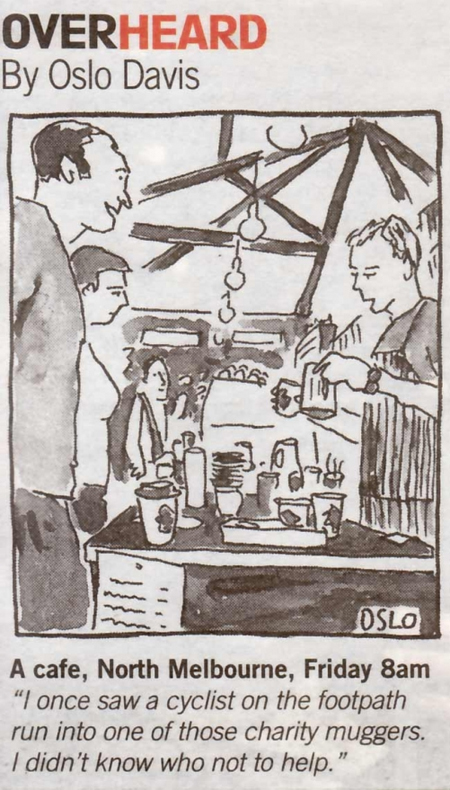

3 Feet: Most would give a dog more room than that
In some states these bills have passed quite easily, in others they have been vehemently opposed.
Quite honestly I fail to see what the problem is. I doubt most drivers would pass an eighteen wheeler at less than 3 feet clearance; most would come to a complete stop and give a stray dog more room than 3 feet.
So why the big deal in asking the same for a cyclist? In Virginia a bill was recently shot down,
No dumb-ass, it means waiting behind the cyclist until traffic in the opposing lane has passed, then pass when it is safe to do so. At least behind the cyclist the driver is still moving; albeit temporarily at a slower pace.
During any trip by car; count how many times we have to wait behind a vehicle turning left. We don’t sit there a blow our horn impatiently; we wait as long as it takes for a break in opposing traffic so the vehicle ahead can turn and we go on our way. It is all part of our daily driving experience; we expect delays.
Texas recently passed a 3 foot law; however, the governor vetoed it, saying that motorists are already subject to “Reckless and Careless Driving Laws.”
However, this doesn’t seem to work too well in Texas. When a couple on a tandem were hit from behind and both killed last year, no charges were filed against the driver of a pickup truck that hit them.
Opponents of these laws argue that they are unenforceable and point out that police officers can’t get out there with tape measures. These laws are a guideline; when a motor vehicle hits a cyclist, obviously the driver didn’t give the cyclist 3 feet.
There was an exact case like this in Arizona recently (AZ has such a 3 feet law.) where the driver of a garbage truck, struck and killed a female cyclist.
What about other vulnerable people on the road, a pedestrian, or a motorist changing a tire. Common sense and common decency says a driver should slow down, stop if necessary, and then give them as much room as possible in passing.
But of course, if common sense and common decency prevailed, we wouldn’t need 3 foot passing laws.